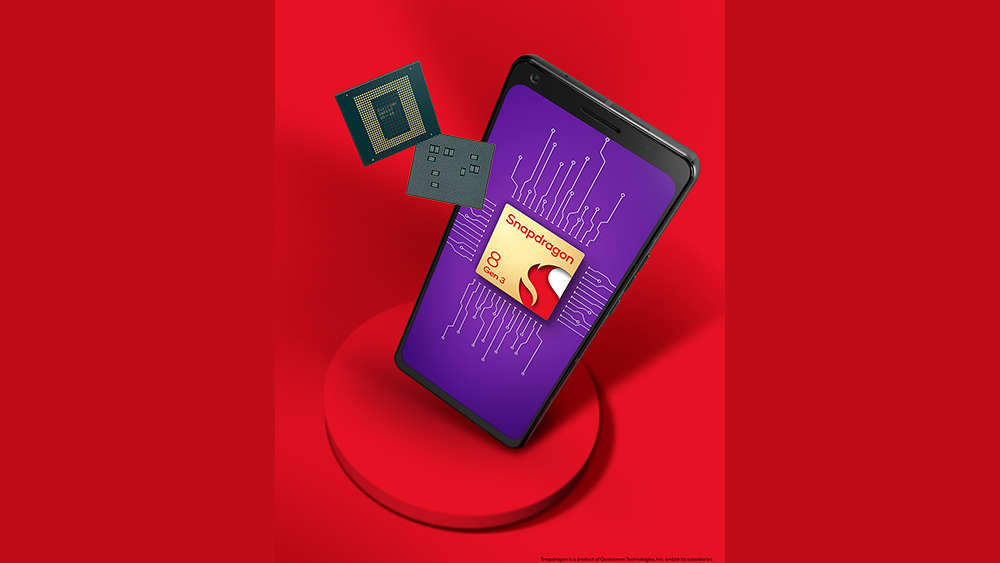Next year’s flagship Android phones could offer one big wireless audio upgrade
Hi-res audio playback via compatible wi-fi headphones

Qualcomm has just announced its latest flagship chipset which is set to power several next-generation flagship Android phones in 2024 – and its specification includes one significant audio feature.
The new Snapdragon 8 Gen 3 chip, which is touted to power next-gen flagship Android phones “expected to be available in the coming weeks” and likely to be adopted by phone brands including Samsung, Sony, OnePlus, Oppo and Honor, has an audio specification that caught our eye during the announcement: support for Qualcomm’s XPAN (Expanded Area Network) technology. This will allow for the wireless playback of hi-res audio (up to 24-bit/96kHz) between the Snapdragon 8 Gen 3 chip-toting devices and wireless headphones and speakers featuring the company’s latest S7 Pro Gen 1 audio chip.
Hi-res audio playback over an internet connection is already possible between phones and wireless speakers, of course, though the Snapdragon 8 Gen 3 and S7 Pro Gen 1 chips working in conjunction with one another could see a phone transmit hi-res streams to wireless headphones for the first time. Unless it is pipped to the post by a rival technology, of course. We expect the first product announcements on both sides to follow in the coming weeks, with eyes on the Samsung S24 lineup expected in January.
Aside from this new addition to Snapdragon Sound (Qualcomm’s umbrella term for its latest package of audio technologies), the Snapdragon 8 Gen 3 chip promises 30 per cent faster performance and increased efficiency by 20 per cent as well as 25 per cent gains in graphics (GPU) speed and power efficiency compared with last year’s (Gen 2) chipset. It is also the company’s first mobile platform “designed with generative AI in mind”. To that end, Qualcomm has built into it an AI ‘subsystem’ called ‘AI Stack’ which will allow manufacturers to leverage and develop AI software features.
One of the neat AI phone camera features that can be facilitated by the latest chip is the ability to expand a photo, offering a much wider image than is ‘captured’. So if, say, you wanted to make a portrait shot a landscape one, you could, with AI filling in the ‘missing’ details. There’s also the potential for two of today’s most innovative camera features to be applied to video capture: magic eraser (which removes undesirable objects in a frame at the user’s request) and night vision (which enhances details in darkly lit environments). 'On-device' AI assistants integrated into phones will be designed to more naturally interact with your everyday usage and tasks, too, whether that's suggesting local restaurants based on dinner plans in your calendar, generating an image, or taking headline notes from voice calls.
Elsewhere, an enhanced graphics engine makes 240fps gaming (on 240Hz displays) possible, while support for the latest Wi-Fi 7 standard, with its maximum data speed of 5.8Gbps and data rate more than four times that of Wi-Fi 6, could unlock 8K video streaming.
MORE:
Wi-fi and AI to pave the way for smarter, “hi-res” headphones – and sooner than you think
Get the What Hi-Fi? Newsletter
The latest hi-fi, home cinema and tech news, reviews, buying advice and deals, direct to your inbox.
One of our favourite iPhone audio features could be coming to more Android phones
Sony WH-1000XM6: 5 things we want from Sony's next wireless ANC headphones
Becky is the managing editor of What Hi-Fi? and, since her recent move to Melbourne, also the editor of the brand's sister magazines Down Under – Australian Hi-Fi and Audio Esoterica. During her 11+ years in the hi-fi industry, she has reviewed all manner of audio gear, from budget amplifiers to high-end speakers, and particularly specialises in headphones and head-fi devices. In her spare time, Becky can often be found running, watching Liverpool FC and horror movies, and hunting for gluten-free cake.

